The Garrett Ace 250 has long been regarded as a legendary metal detector. Known for its reliability, simplicity, and solid performance, it quickly became one of the bestselling detectors worldwide.
This article explores the key features of the Garrett Ace 250 and assesses whether it remains a good option for metal detecting enthusiasts. We’ll dive into its design, performance, and competitors, while comparing it to other models in the Garrett Ace product line.
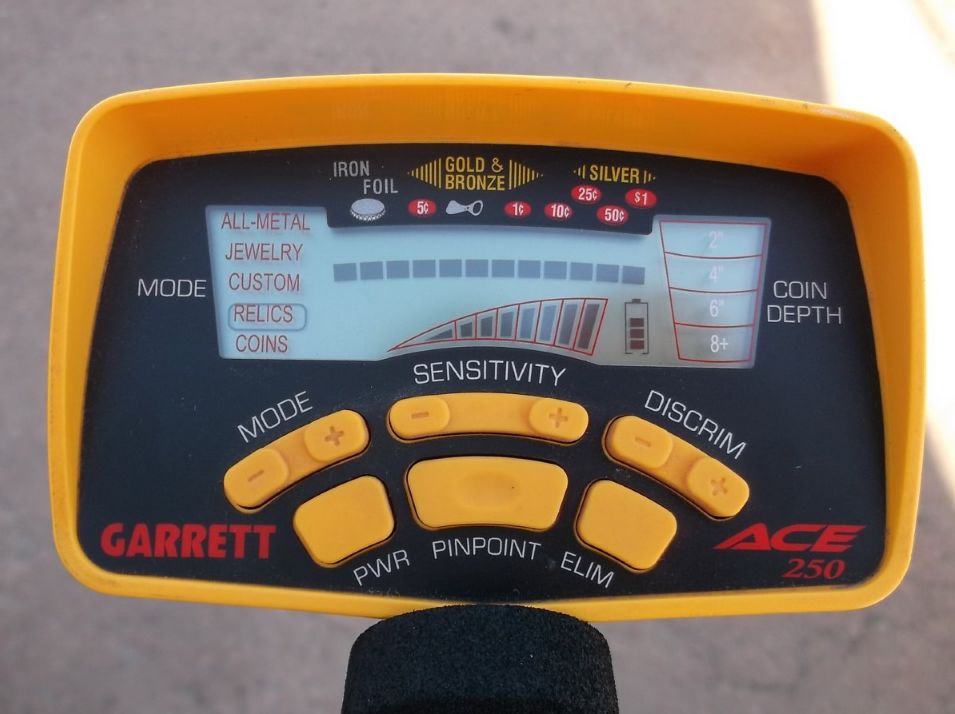
Contents
Garrett Ace 250 vs Ace 300 vs 400
The introduction of the Garrett Ace 300 and Ace 400 has expanded the Ace product line, offering upgrades that aim to refine the experience of metal detecting. But without prior experience in treasure hunting, it can be difficult to identify the key differences and determine if these improvements justify the extra cost.
In short, the upgrades in the 300 and 400 models do offer significant value. The Garrett Ace 300, for instance, includes features like Digital Target ID, which provides more precise readings, and camlocks for added stability during use. These may seem like small enhancements, but they can greatly improve ease of use and detection accuracy, especially for intermediate and advanced users.
For a more in-depth comparison, you can read our detailed review of the differences between the Garrett Ace 300 and Garrett Ace 400. However, if you’re looking for a quick overview, the key takeaway is that both models introduce user-friendly upgrades, and their added features make detecting more efficient.
| Model | Garrett Ace 250 |
| Weight | 2.7 lbs (1.2 kgs) |
| Length (Adjustable) | 42″ to 51″ (1.06m – 1.29m) |
| Batteries | 4 AA (included) |
| Headphones | Included |
| Warranty | 2 Year |
| Circuit Type | VLF |
| Standard Searchcoil | 6.5″ x 9″ PROformance |
| Operating Frequencies (kHz) | 6.5 kHz |
| Water resistance | Waterproof coil |
| Submersion Depth | No |
| Iron Discrimination Segments | 4 |
| Ground Balance | Preset |
| Search Modes | 5 (plus Pinpoint) |
| Audio Threshold | No |
| Updatable Software | No |
| Sensitivity/Depth Adjustments | 8 |
| Electronic Pinpointing | Yes |
| VDI (0 to 99 scale) | Yes |
| Build-in flashlight | No |
- ELECTRONIC PINPOINTING: Precisely locate targets and speed up recovery for more…
- FIVE SEARCH MODES: Choose from All Metal, Jewelry, Custom, Relics, and Coins for…
- ACCEPT/REJECT DISCRIMINATION: Customize discrimination patterns to focus on…
- COIN DEPTH INDICATOR: Continuous depth reading helps determine how deep a target…
- CARRY BAG INCLUDED: Durable bag for easy storage and transport of your detector…
Last update on 2025-07-17 / Affiliate links / Images from Amazon Product Advertising API / Source: Amazon Affiliates
What is the metal detector designed for?
Though you can read about the specific differences between the newer models in our detailed review, here we’ll focus on the Ace 250’s competitors in the broader market. With other manufacturers releasing more advanced devices at similar price points, the Ace 250 now faces some stiff competition.
While the Garrett Ace 250 remains a reliable option for beginners, it’s becoming outdated compared to other models offering more advanced features for similar prices. For instance, the Bounty Hunter Land Ranger Pro and Fisher F22 both deliver increased functionality, including more target ID options and better depth detection, making them attractive alternatives.
While the Garrett Ace 250 remains a nostalgic favorite for many hobbyists, those seeking more functionality at a similar price point may find greater value in some of these newer options. Despite its enduring popularity, the Ace 250 is beginning to show its age in a rapidly evolving market.
The review
The Garrett Ace 250 is an upgraded version of the popular Ace 150 model, designed to offer more refined detection capabilities while maintaining the reliability and ease of use that made its predecessor so popular. Known as a legend among treasure hunters, the Ace 250 holds a strong position in the world of modern metal detectors.
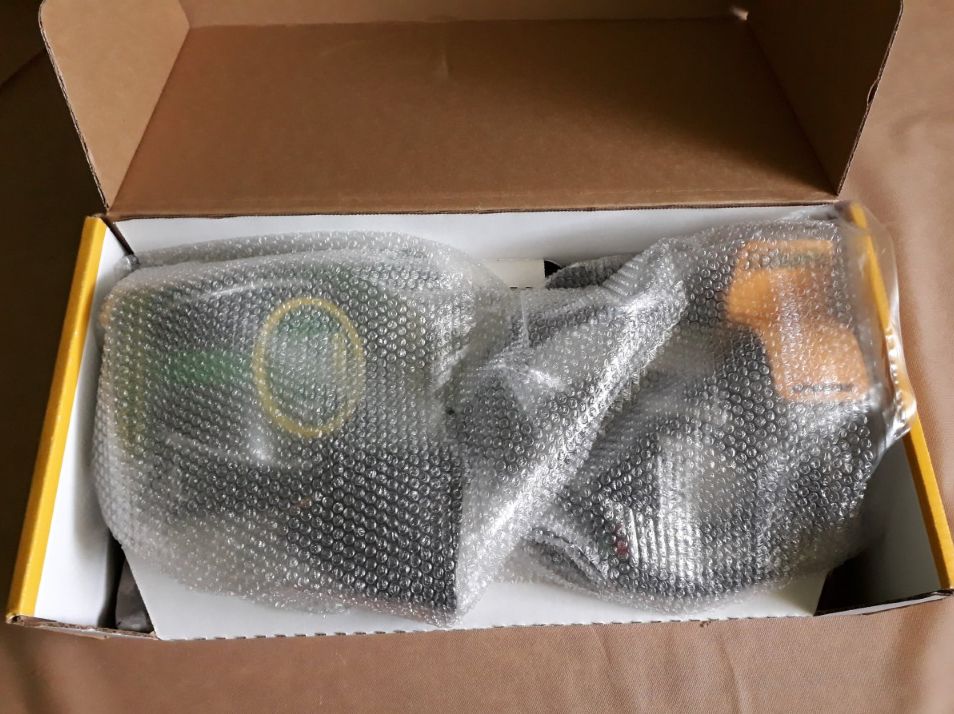
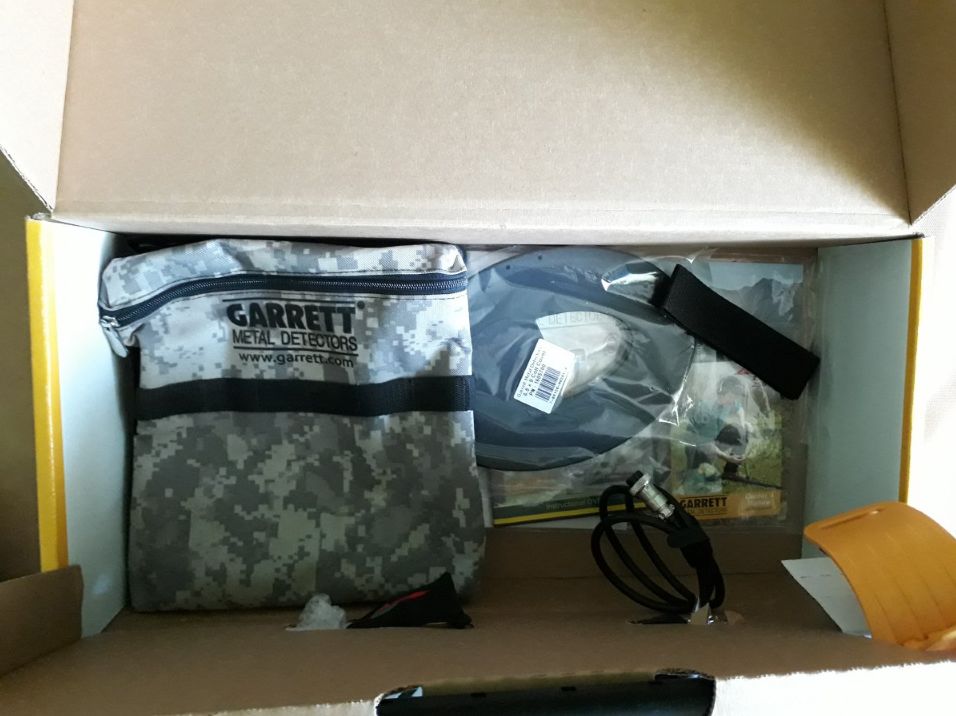
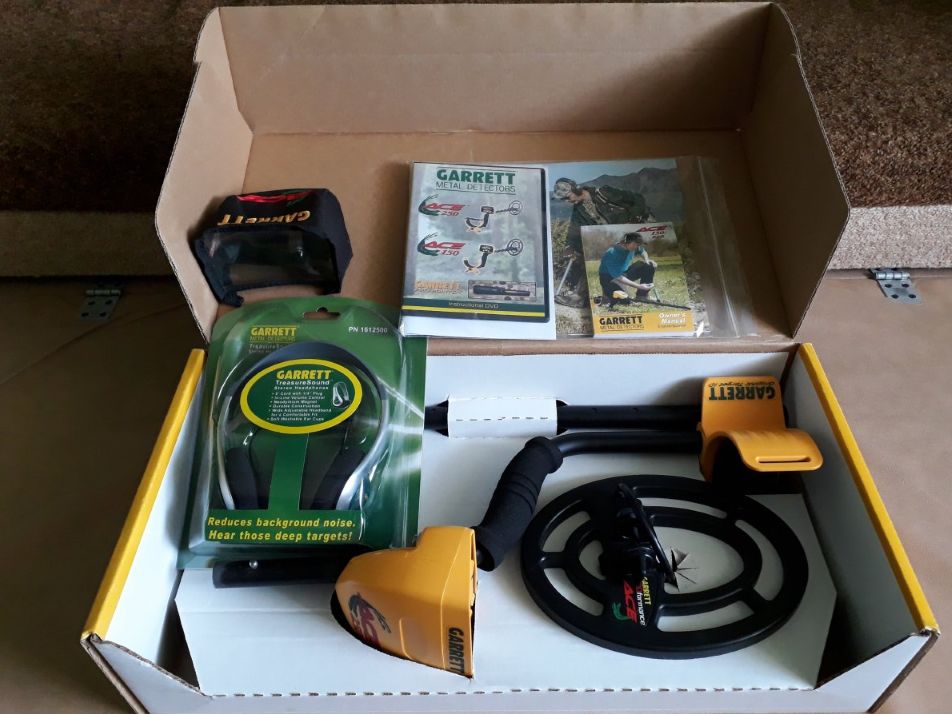
The shaft
The Garrett Ace 250 features a standard S-shaped construction with three detachable shaft sections. When disassembled, the device can be broken down into these sections, allowing it to be reassembled in about 30 seconds. This quick and easy assembly makes it ideal for users who need to transport the detector frequently.
The sections are connected using spring buttons, which are simple but not the most robust solution. Later models in the Garrett Ace series were upgraded with camlocks, offering better fixation, increased shaft rigidity, and improved durability during extended use.
Shaft and Armrest
The upper shaft houses the armrest, control unit, and handle. While the armrest is comfortable, it is made of relatively thin plastic, which can crack under pressure or over time. There is an option to adjust the armrest position along the shaft, and the standard package includes a strap for additional arm support. However, many users find the strap unnecessary since the armrest already provides adequate stability. Using the strap may even make it cumbersome to remove your hand from the armrest quickly.
Handle Material and Comfort
The handle on the Garrett Ace 250 is made from polyurethane. Though this material is affordable and comfortable, it may not be the most durable option for extended use. For comparison, the Garrett AT Max, a higher-end model, features a rubber-coated handle, offering better grip and longevity, especially in wet or rough conditions.
Weight and Dimensions
Weighing in at just 2.7 lbs (1.2 kg), the Ace 250 is relatively lightweight, reducing arm fatigue during long treasure hunts. The shaft length can be adjusted between 40 and 53 inches (1.06 to 1.29 meters), making it adaptable to users of different heights. However, when disassembled, the length of the detector may not fit into standard backpacks, making it more practical to use an elongated carry bag or a specially designed backpack for easier transport.
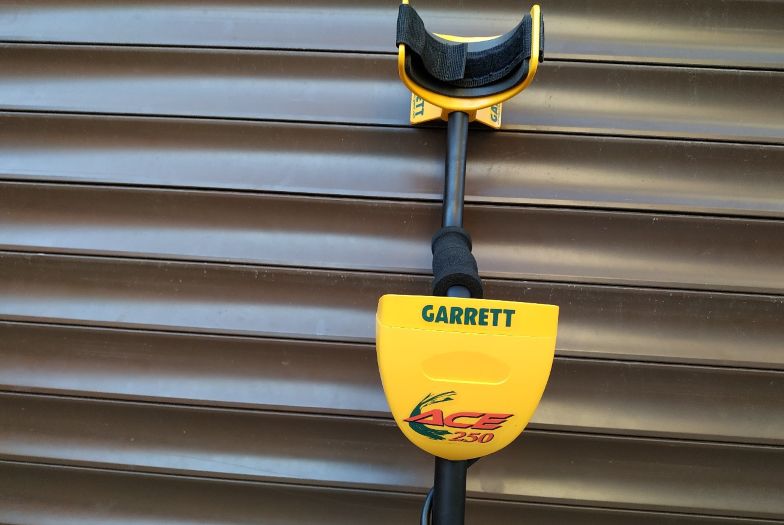
The coil
The Garrett Ace 250 is capable of detecting both small and large targets, making it a versatile choice for treasure hunters. Its operating frequency of 6.5 kHz strikes a balance between low frequencies, which offer greater depth but less sensitivity to smaller targets, and higher frequencies, which are more sensitive to small targets but offer shallower depth.
Depth of Detection
The manufacturer claims that the Ace 250 can detect coins up to a depth of 10 inches and larger targets up to 20 inches. From personal experience, these values can be exceeded depending on several factors. Soil composition, the orientation of the target (whether it’s flat or edgewise), and the level of soil oxidation all play critical roles in how deep the device can detect.
In areas with mineralized soil or significant oxidation, detection depth may be reduced. However, in optimal conditions, with flat targets, the Ace 250 can outperform its stated capabilities.
Coil Specifications
The standard search coil included with the Garrett Ace 250 is the PROformance 6.5″ x 9″ (16 x 22.5 cm) mono coil. This is a relatively small coil that offers a good balance between performance and ease of use. While it’s adequate for casual treasure hunting, its size and mono configuration mean it has limitations when it comes to detecting in heavily mineralized soils or at greater depths.
Upgrading the Coil for Better Performance
For those looking to enhance the performance of the Ace 250, upgrading to a larger, double-D (DD) coil is a popular option. DD coils provide better coverage and greater depth, particularly in mineral-rich areas, where mono coils may struggle. The expanded detection field and improved sensitivity to smaller targets make this upgrade a worthwhile investment for users seeking to boost the device’s capability.
Durability and Wiring
The Ace 250’s coil is housed in a durable case made from impact- and wear-resistant plastic, ensuring it can withstand rough handling in the field. Additionally, the coil is fully waterproof, making it suitable for wet environments or shallow water detecting.
The coil is connected to the control unit via a sturdy double-braid wire, which is both flexible and strong. This design minimizes the risk of phantom signals when the coil hits obstacles or when the cable moves during operation. The threaded screw connection ensures the coil remains securely fastened, preventing signal interference or false readings.
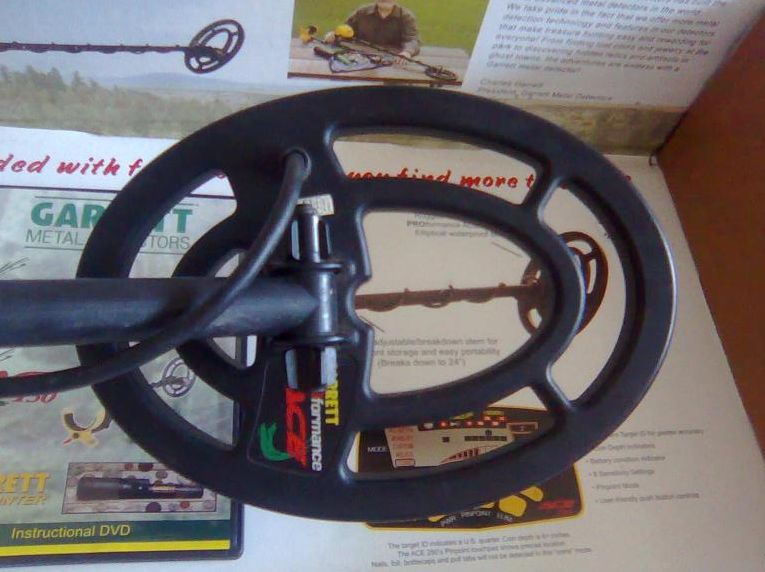
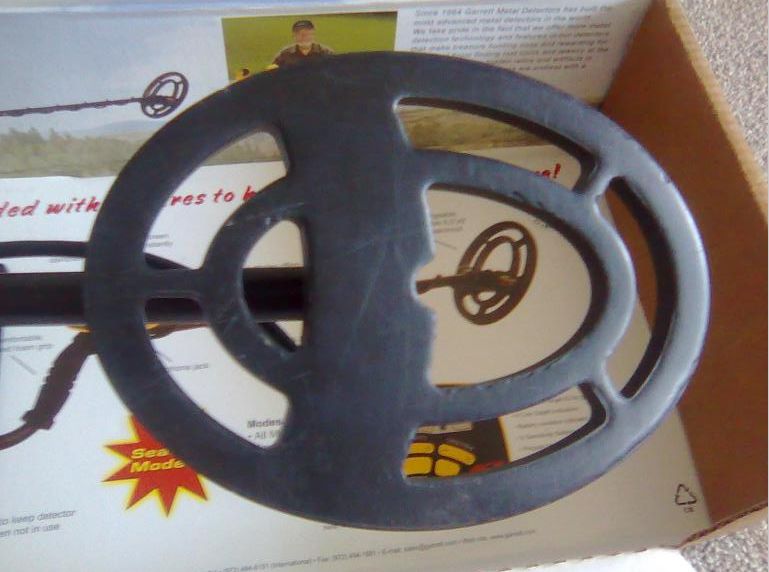
The headphones
The Garrett Ace 250 comes with a standard headphone jack, though headphones are not included in the basic package. However, many available package sets offer headphones, pinpointers, and additional accessories to enhance your detecting experience.
One key limitation of the Ace 250 is that it doesn’t have a built-in volume control. This means that when selecting headphones, it’s important to choose a pair with adjustable volume settings. Volume control is particularly helpful when detecting in noisy environments, allowing you to hear faint signals without external interference or when hunting in quiet areas where loud tones may be disruptive.
When choosing headphones, it’s also recommended to select those with a stranded wire design. Stranded wires help prevent tangling, making them more durable and practical for use in the field, where constant movement can easily cause standard wires to become knotted.
The battery
The Garrett Ace 250 operates on 4 AA batteries, which provide 8-10 hours of continuous use. Based on my experience, a single set of batteries can power the device through 2-3 treasure hunting trips before needing replacement.
For a more economical and environmentally-friendly option, many users opt for 1.2V AA rechargeable (accumulator) batteries instead of standard 1.5V AA batteries. Despite the slight difference in voltage, switching to rechargeables won’t negatively impact the detector’s sensitivity or detection depth, contrary to a common misconception. This makes accumulator batteries a cost-effective choice for frequent hunters.
One thing to note is the Ace 250’s battery charge indicator, which displays power levels using four segments. When using rechargeable batteries, the top segment may deplete faster, but the remaining segments tend to last longer compared to traditional AA batteries. This ensures reliable performance throughout your hunting session.
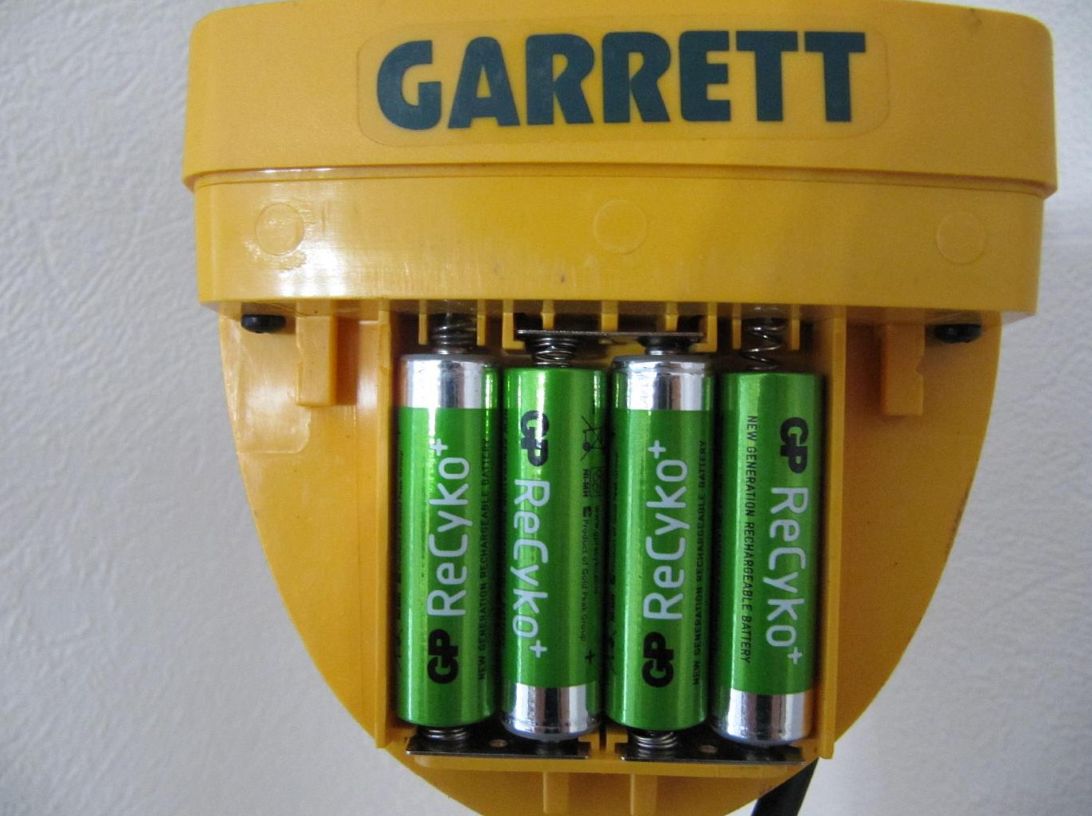
The control unit
The intuitive button layout means that you can adjust the device with one hand while continuing your search. Even if you’re wearing gloves, the size and responsiveness of the buttons make them easy to use, adding convenience to your treasure hunting experience.
The external speaker is positioned on the bottom of the control unit, while the jacks for headphones and the coil are located on the back, keeping the design clean and functional.
LCD Display Features
The Ace 250’s LCD display provides a clear, easy-to-read interface that shows all the essential information you need while treasure hunting:
- Target Identification: The 12-segment discrimination scale indicates the likely type of metal you’ve detected, helping you identify targets quickly.
- Target Depth: The depth indicator provides an approximate target depth, displayed in 2, 4, 6, or 8+ inches, giving you a clear idea of how deep to dig.
- Battery Charge Level: The four-segment battery indicator ensures you can monitor your power levels throughout your hunt.
- Sensitivity Level: With a scale ranging from 1 to 8, you can adjust the device’s sensitivity to match specific ground conditions or types of treasure.
- Discrimination Program: The display also shows the current discrimination mode, so you can easily switch between different search settings based on your target.
With its adjustable sensitivity settings and clear target depth display, the Ace 250 offers an excellent balance between ease of use and functionality for beginner metal detectorists.
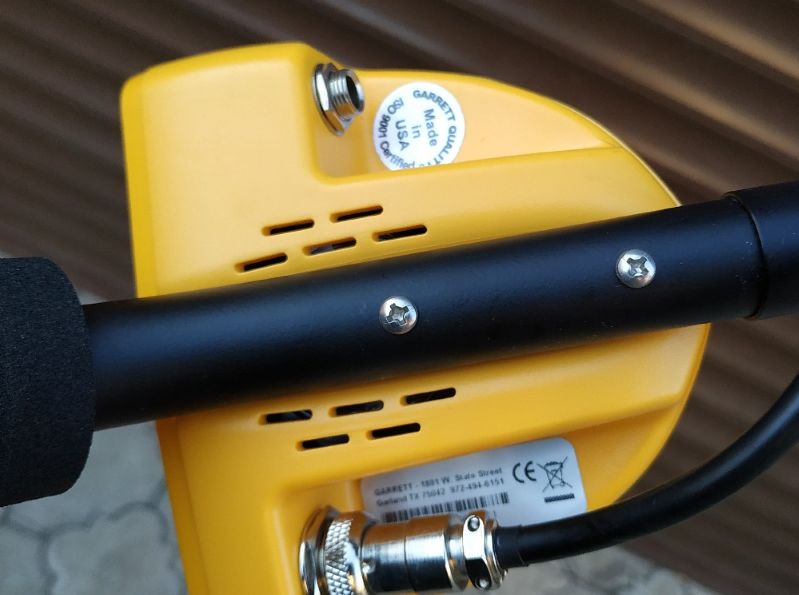
Discrimination
The Garrett Ace 250 comes equipped with a user-friendly software interface featuring five distinct modes. This allows users to customize their treasure hunting experience by turning off unnecessary segments on the discrimination scale, which now boasts 12 segments instead of the previous 5. This enhancement greatly improves the detector’s operational efficiency and precision.
With the updated discrimination scale, users have the flexibility to disable specific segments for both low and high conductivity metals, helping to refine target identification and reduce false signals. For instance, if you’re searching in an area with a lot of junk metal, you can easily adjust the settings to ignore low-conductivity targets, allowing you to focus on more valuable finds.
Additionally, the “Custom” mode enables you to save your preferred discrimination settings even when the device is powered off. This feature ensures that you can quickly resume your search with your personalized settings intact, making the Ace 250 not only efficient but also tailored to your specific treasure hunting needs.
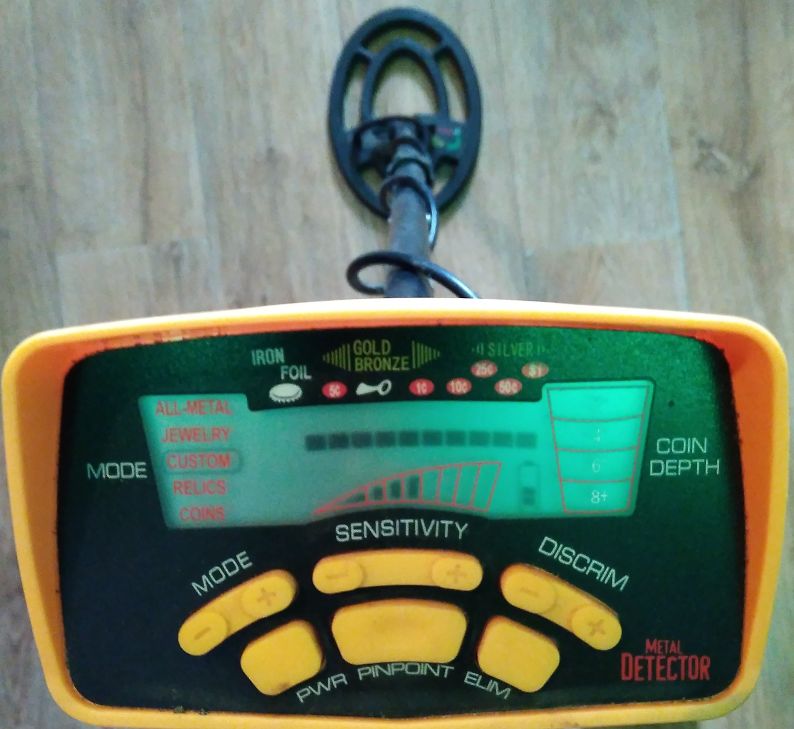
Modes of operation
The Garrett Ace 250 is designed with beginners in mind, featuring intuitive symbols above the discrimination scale that represent common targets associated with specific segments. This thoughtful design eases the learning curve for new users, making it easier to understand what they might be detecting.
Pre-Set Search Modes
The device offers four pre-set searching modes, each tailored to different types of treasure hunting:
- All-Metal: This mode is straightforward, allowing the detection of all types of metals – both ferrous and non-ferrous. It maximizes sensitivity and is ideal for those new to metal detecting. Simply turn it on, and you’re ready to start searching without any exclusions.
- Jewelry: Specifically designed for finding jewelry, this mode excludes iron and its derivatives. However, users should be cautious, as small jewelry items located near large amounts of ferrous metal or aluminum may be missed.
- Relics: This mode is optimized for searching various relics made from low-conductivity metals like lead, tin, and gold. It automatically excludes iron while allowing all other metals, making it versatile for different relic types.
- Coins: Tailored for detecting coins made from non-ferrous metals, this mode discriminates against iron and aluminum. It’s particularly beginner-friendly, as it filters out unwanted signals from iron trash, allowing users to focus on more promising finds.
Custom Mode
The Custom mode allows for personalized adjustments to the detector’s settings, giving experienced users the flexibility they need. If a user becomes overwhelmed by the various settings, they can easily reset the device to its factory defaults by holding down a specific button for 10 seconds.
Selecting the best mode depends on your specific goals and experience level. Beginners may find it beneficial to start with the All-Metal mode to familiarize themselves with the device and learn to differentiate between various signals. Over time, as users gain experience, they will develop a better understanding of the different tones and indications associated with valuable targets, such as distinguishing between bottle caps and coins.
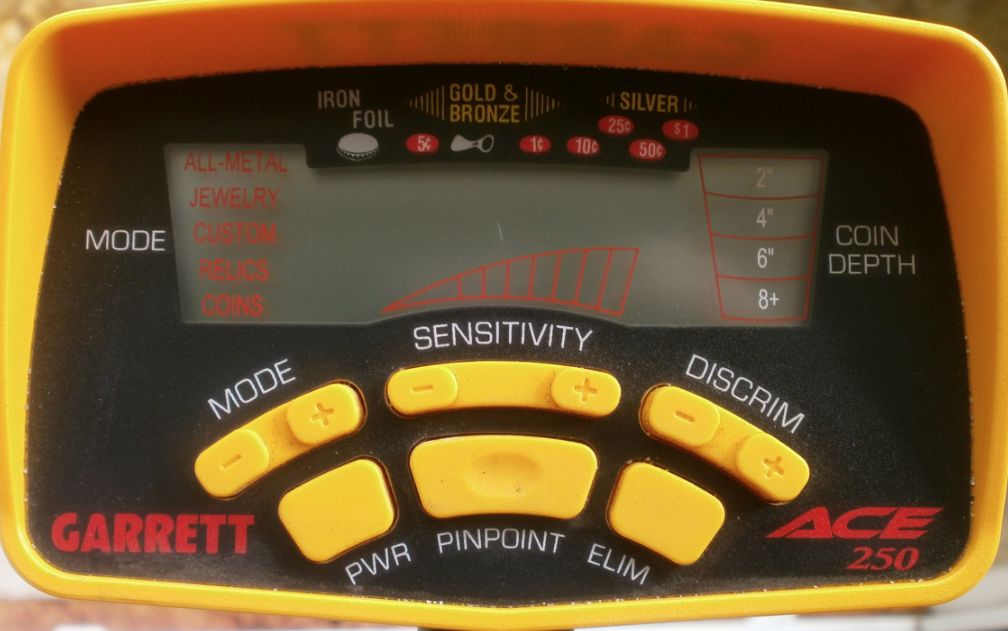
Pinpoint
The Pinpoint feature is a crucial addition to the Garrett Ace 250, significantly enhancing the efficiency and accuracy of treasure hunting. This mode is specifically designed to help users identify the exact location of a target, which can greatly reduce the time spent searching and minimize the risk of damaging valuable items during excavation.
Continuous Signal Reception
When the Pinpoint mode is activated, the detector continuously receives signals from the target, even if the search coil remains still. This allows users to pinpoint the target’s location with precision, making it easier to identify where to dig without overshooting or missing the item.
Protecting Your Finds
Thanks to the built-in pinpointer function, users can dig with confidence, knowing that they are less likely to damage precious finds, such as coins or other valuable artifacts. This feature is particularly beneficial for beginners, as it provides an added layer of assurance while honing their digging techniques.
In summary, the Pinpoint mode not only streamlines the search process but also helps protect valuable treasures, making it an invaluable tool for both novice and experienced metal detectorists.
Ground balance
The Garrett Ace 250 features an embedded ground balance function, which automatically activates when the device is powered on. This feature is particularly advantageous for beginners, as it simplifies the user experience by allowing them to start detecting without needing to adjust complex settings.
Automatic Adjustment
In entry-level metal detectors like the Ace 250, the ground balance is set to an average value for soil mineralization. This means that users do not have the option to fine-tune this parameter; they can simply rely on the detector to perform adequately in various soil conditions. This automatic setting is ideal for novice detectorists who may find it overwhelming to navigate through intricate settings.
Limitations and Advancements
While the automatic ground balance is convenient, it may not be sufficient for users who become more experienced over time. As detectorists gain skills and seek to improve their performance, having the ability to manually adjust the ground balance becomes increasingly important. Manual ground balance adjustment allows users to tailor their settings according to specific soil conditions, enhancing detection capabilities and overall performance.
Conclusions
Garrett Ace 250 is a classic metal detector that has established itself as a reliable choice for beginners. However, it is important to note that it is now somewhat outdated, especially given the advancements in technology and design in the metal detecting industry. While the Ace 250 remains user-friendly and effective for casual treasure hunting, there are slightly more expensive models available that offer significantly better performance and features (Nokta Simplex and Legend).
